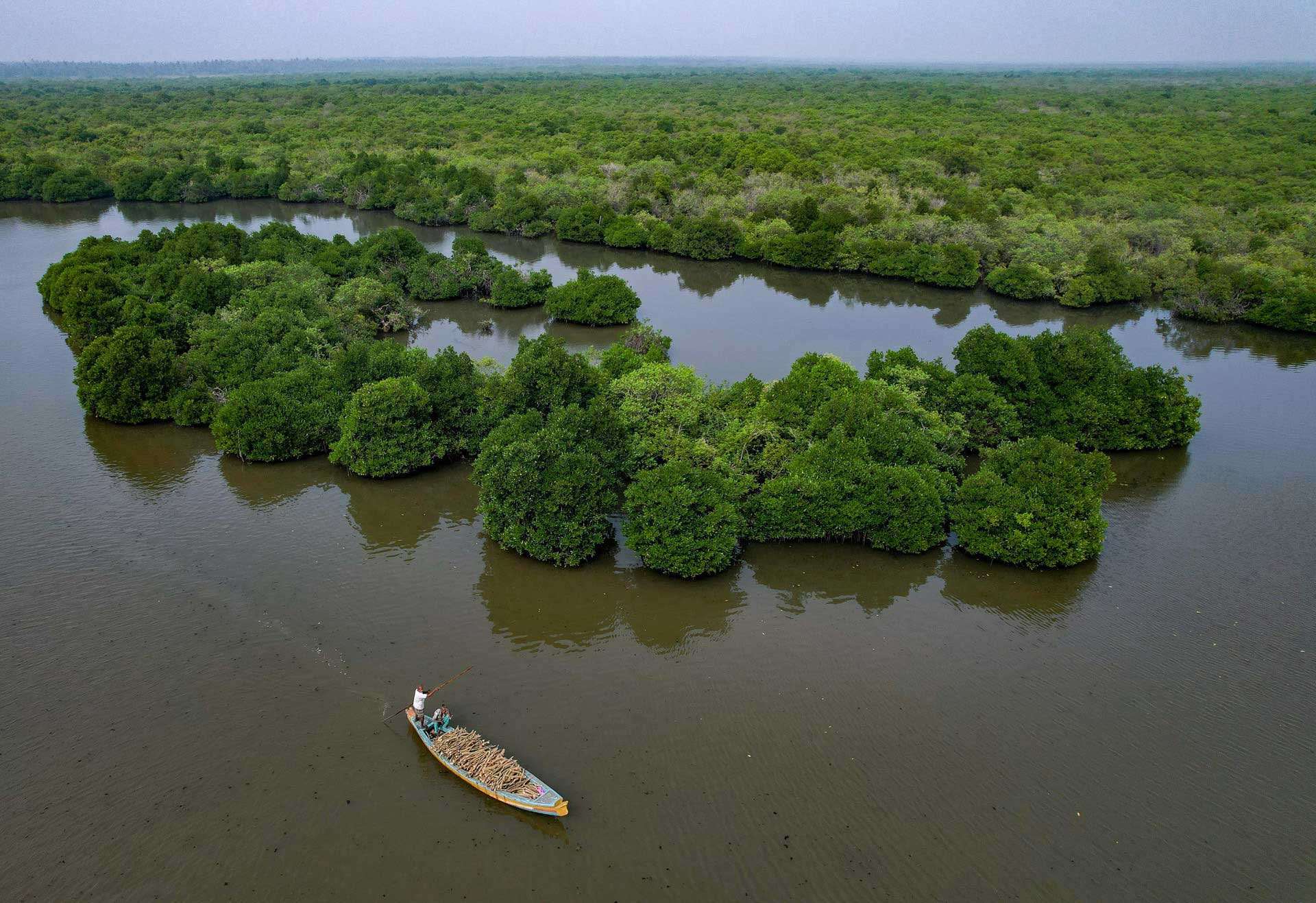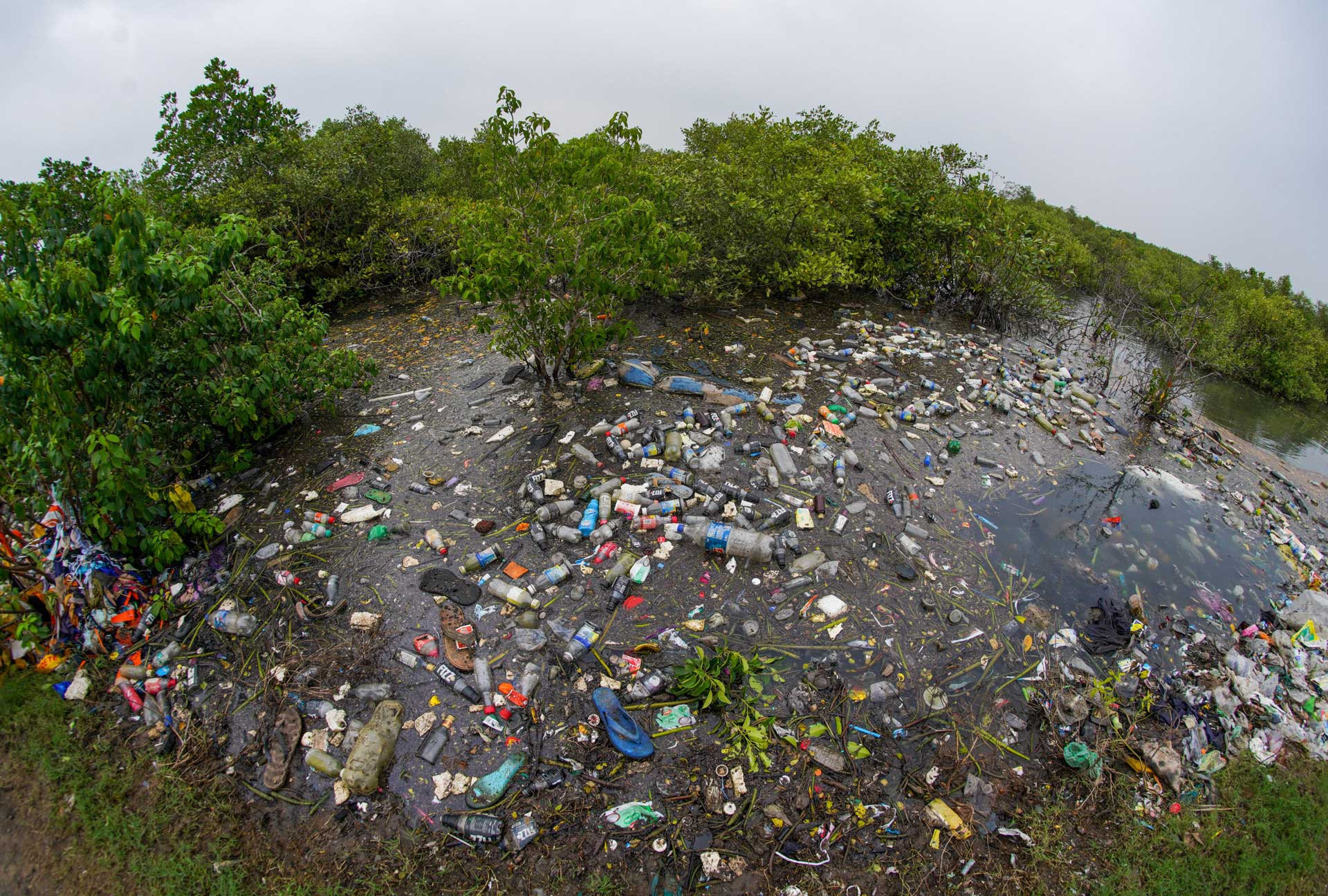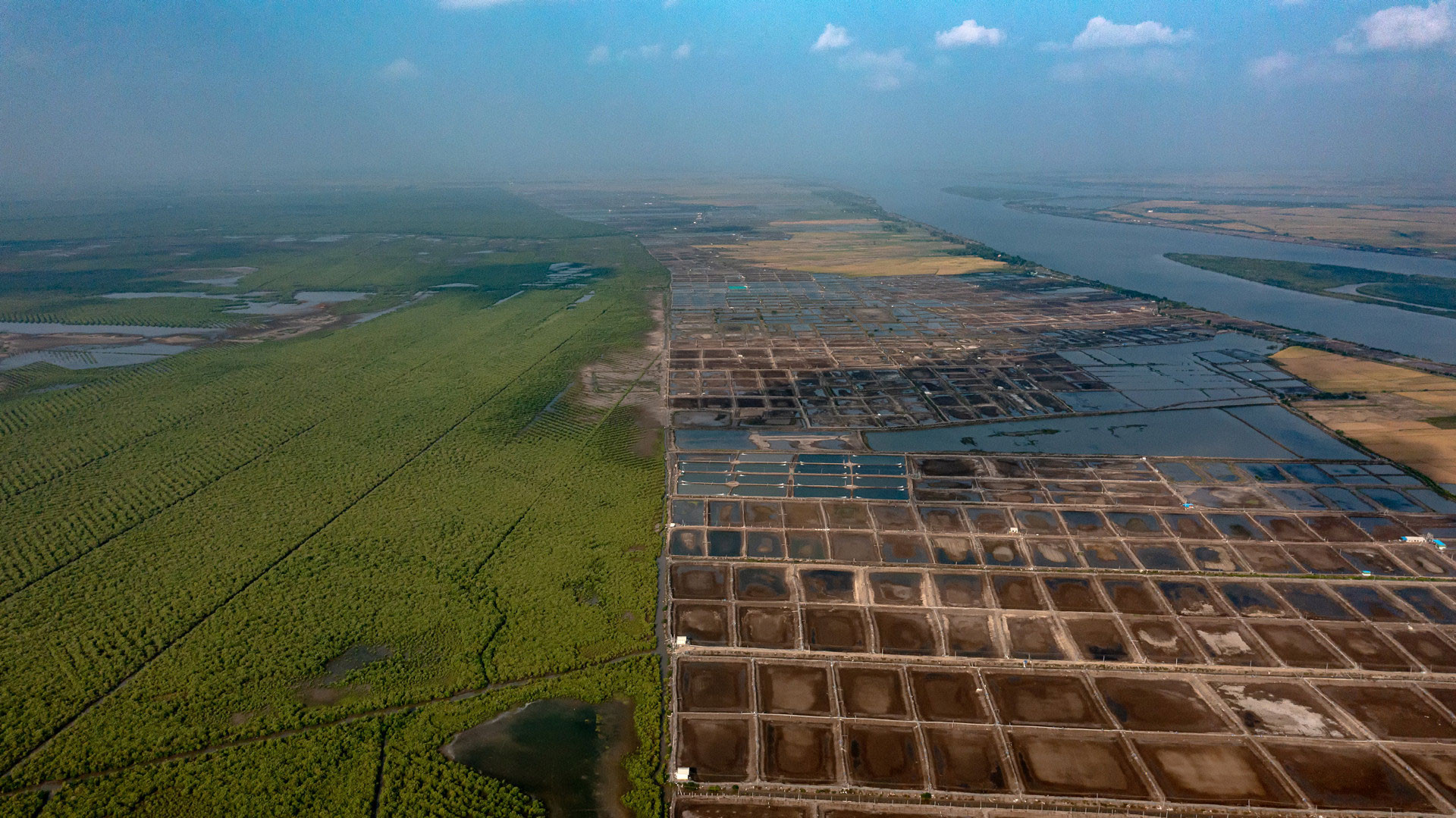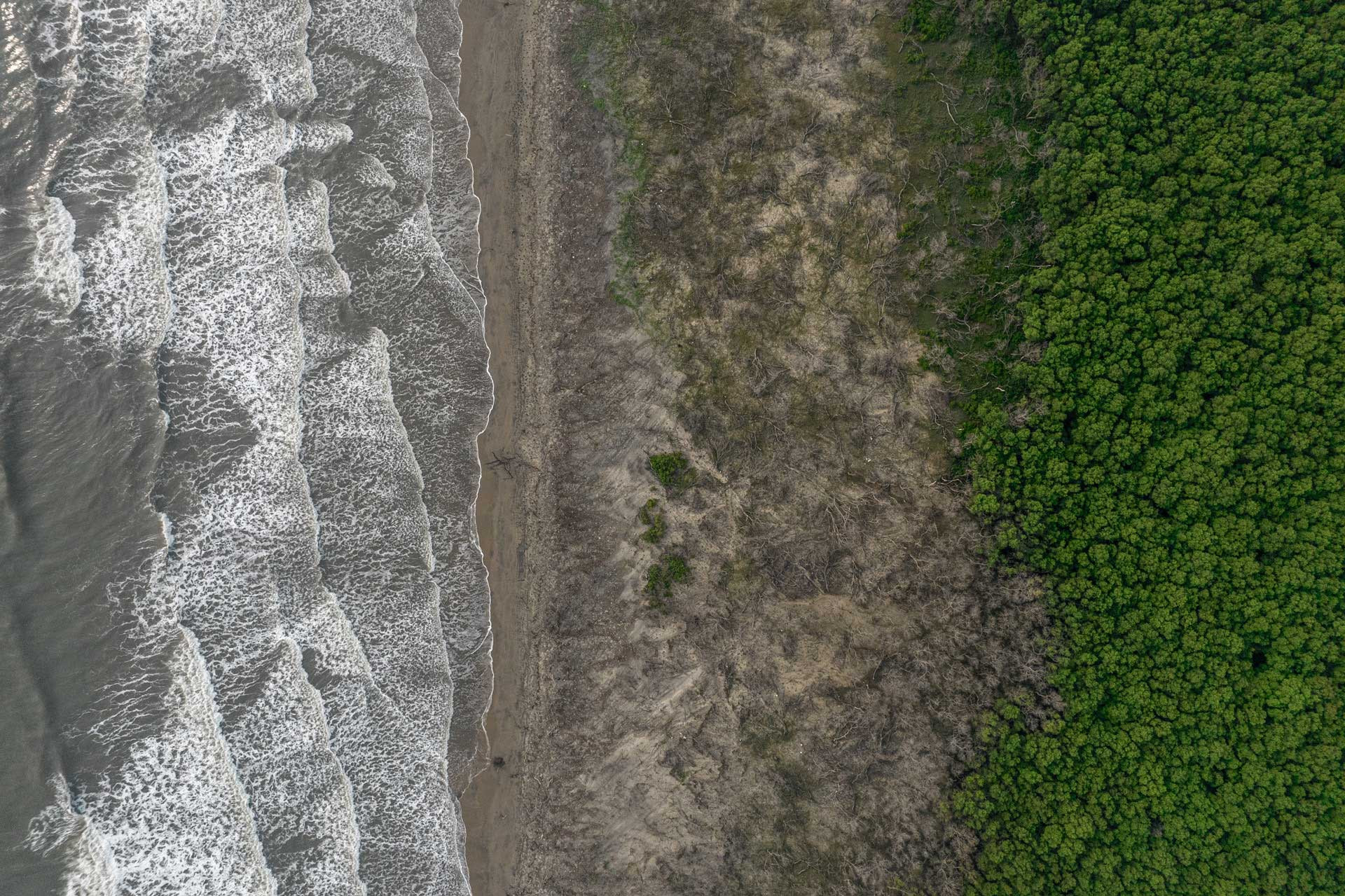
Winner | Photographer of the Year – Portfolio
Entirely shot from a drone, the photographer zooms out on the mangrove forests of coastal Andhra Pradesh to capture the magnitude and scale of the threats this unique ecosystem is facing today
by — Srikanth Mannepuri
Disappearing Guardians
In sheltered tropical and subtropical coastal areas all around the globe, you will find one of the most biologically complex ecosystems on Earth, mangroves. These unique coastal wetlands serve as a bridge between land and sea. They are both providers and protectors—home to a vast diversity of fish, bird and reptile species, a source of livelihood for countless coastal communities, and an effective carbon sink and flood barrier.
Sadly, today, mangrove forests are being cleared at an alarming rate and have become a globally threatened habitat. The photostory focuses on the mangrove forests of coastal Andhra Pradesh, however, the threats and losses ring true for any mangrove habitat anywhere in the world. The images have been deliberately captured with a drone to zoom out first before we zoom into the problem. The bird's eye view perfectly captures the magnitude, scale and gravity of the situation.
What's worse? As global temperatures rise, sea levels are rising too, further destroying mangroves and endangering coastlines. It's a vicious downward spiral! Looking at such issues in isolation would be a fatal flaw. Humans and insects, reptiles and mammals, mountains and seas—are all part of an intricately woven fabric. A tiny tear in one corner is enough to unravel the entire piece. Here, the photographer attempts to tell the tale of one such tear that has gone unnoticed for too long.
A small boat carrying timber collected from the mangrove forests flanking the canal leaves for the nearby coastal village. One boat from one village in a single afternoon is amassing a ton of wood! When compounded, this contributes enormously to the problem of mangrove deforestation. Slowly but surely, it is uprooting the ecosystem, one tree at a time.
At first glance, you notice the proximity of the mangroves to the coastal settlement. But as you zoom in, the problems start to appear. The inappropriate disposal of plastic waste and the release of untreated sewage into the water affect an abundance of life forms that are dependent on these forests.
Plastic waste is everywhere today, and mangroves are no exception. Even though many of these places are not accessible to the public, pet bottles and other single-use plastics have managed to reach them.
Nets discarded by fisherfolk, who make up a large percentage of the coastal community, pose a significant threat to the wildlife in the region. In mangrove forests, where the tide constantly washes in and out, discarded nets get stuck on trees and shrubs and can fatally trap reptiles and birds. Here, you can see a Dog-faced Water Snake that got entangled in a net and eventually died.
The photograph shows a large industrial plant in close proximity to mangrove forests. Annually, hundreds of acres of wetlands are cleared to make room for large industries. These plants also typically release large amounts of effluents into the nearby water bodies, which form an impervious toxic layer on the surface, proving lethal to the fauna and flora.
Mangroves are three times as effective as territorial forests in trapping greenhouse gases, making them one of the most effective tools to address global warming. But they are slowly, quietly being wiped out. What you are seeing here is a barren wasteland where hundreds of acres of verdant forests once stood. The land is cleared for various reasons, primarily to create space for industries and aquaculture ponds.
The photograph captures the scale at which aquaculture is taking over mangroves along India's coastline. In order to keep up with the rising demand for fish and shrimp, more and more mangroves are giving way to aquaculture farms. The loss of mangroves means the loss of precious carbon sinks and one of nature's most efficient natural barriers against floods. But the problem does not end there. For high yields, these ponds are packed to their limits with fish/shrimp seeds, and for them to survive within such unnatural constraints, antibiotics, chemicals, and fertilisers are pumped in. On several occasions, the toxic byproducts and effluents are released untreated into the freshwater canals that eventually mix with the natural estuaries among mangroves, polluting them beyond immediate repair.
The Fishing Cat is one of the iconic species of these unique ecosystems. This particular individual got trapped while trying to prey on domestic poultry in one of the villages adjoining the mangrove forest. Thankfully, the locals contacted the forest department immediately and the cat was rescued. After a thorough examination by the veterinary doctor, the Fishing Cat was deemed healthy and was released back into the same forest. This is an example of a well-managed situation by the locals and the forest department. Unfortunately, not all animals that wander into human settlements are this lucky!
Mangroves are unique ecosystems that thrive at the precipice of saline oceans and freshwater estuaries. But the rising sea levels mean more influx of salt water into the estuaries, resulting in unfavourable conditions of mangroves. Sadly, forests that have survived hundreds of years are now at the mercy of global warming.
While forest fires are one of the most visible impacts of global warming, how they impact mangroves is not seen and hence not understood. The photograph shows you explicitly what the impact looks like! While fires eat away forests of the land, oceans drown forests of the water. Having documented these mangroves for several years, the photographer has seen how much they have receded over the same period. He hopes that your scrutiny of the photostory will be our collective first step to protecting the mangrove generations of tomorrow!















